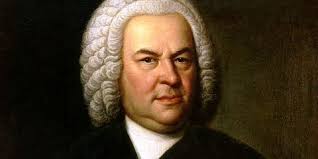Among the masterpieces of solo violin literature, Johann Sebastian Bach’s Violin Partita No. 2 in D minor, BWV 1004, holds a special place. Composed around 1720 during Bach’s tenure in Köthen, this extraordinary work is celebrated not only for its technical brilliance but also for its profound emotional depth. It stands as a cornerstone of the Sonatas and Partitas for Solo Violin, a collection that continues to challenge and inspire violinists centuries after its creation.
Bach in Köthen: A Creative Peak
Between 1717 and 1723, Bach served as Kapellmeister at the court of Prince Leopold of Anhalt-Köthen, a time marked by a flourishing of instrumental music. The Calvinist leanings of the court meant less emphasis on church music, allowing Bach to focus more on secular compositions, particularly works for solo instruments and ensemble.
It was during this fertile period that Bach composed his six works for solo violin: three sonatas (in the Italian style) and three partitas (in the French style). These were likely intended not just for performance, but also as a pedagogical and expressive exploration of the violin’s capabilities.
Structure and Movements
The Partita No. 2 consists of five movements, all based on traditional dance forms:
- Allemanda
- Corrente
- Sarabanda
- Giga
- Ciaccona (Chaconne)
The first four movements are elegant, concise dance pieces, each with its own character and technical challenges. However, it is the final movement—the monumental Chaconne—that elevates the partita to the realm of the sublime.
The Chaconne: A Monument of Western Music
At over 14 minutes in duration, the Chaconne is longer than the four preceding movements combined. Built on a repeating harmonic progression, it is a set of variations that showcases Bach’s unparalleled inventiveness, moving through contrasting moods and textures, from solemnity to exultation.
Many scholars believe the Chaconne was composed in memory of Bach’s first wife, Maria Barbara, who died unexpectedly in 1720 while he was away on a trip with Prince Leopold. Though there is no definitive proof, the theory is supported by the movement’s emotional weight and spiritual depth.
Johannes Brahms once wrote about the Chaconne:
“On one stave, for a small instrument, the man writes a whole world of the deepest thoughts and most powerful feelings. If I imagined that I could have created, even conceived the piece, I am quite certain that the excess of excitement and earth-shattering experience would have driven me out of my mind.”
Legacy and Influence
The Partita No. 2, especially its Chaconne, has had a profound influence on composers, musicians, and audiences for over three centuries. It has been transcribed for piano by Ferruccio Busoni, for guitar by Andrés Segovia, and for orchestra by Leopold Stokowski, among others. Yet, it remains most powerful in its original form for solo violin, where the instrument becomes a vehicle for both technical virtuosity and deep personal expression.
Performing the entire partita demands mastery, but it also invites interpretation and introspection, offering the violinist a canvas to explore Bach’s emotional landscape.
Conclusion
Johann Sebastian Bach’s Violin Partita No. 2 in D minor is more than a baroque suite of dances—it is a journey through sorrow, elegance, struggle, and transcendence. The work continues to be a vital part of the violin repertoire and a timeless testament to Bach’s genius. Whether heard in a concert hall or practiced in solitude, the partita invites listeners and performers alike into a profound musical experience that bridges the centuries.


Comments are closed